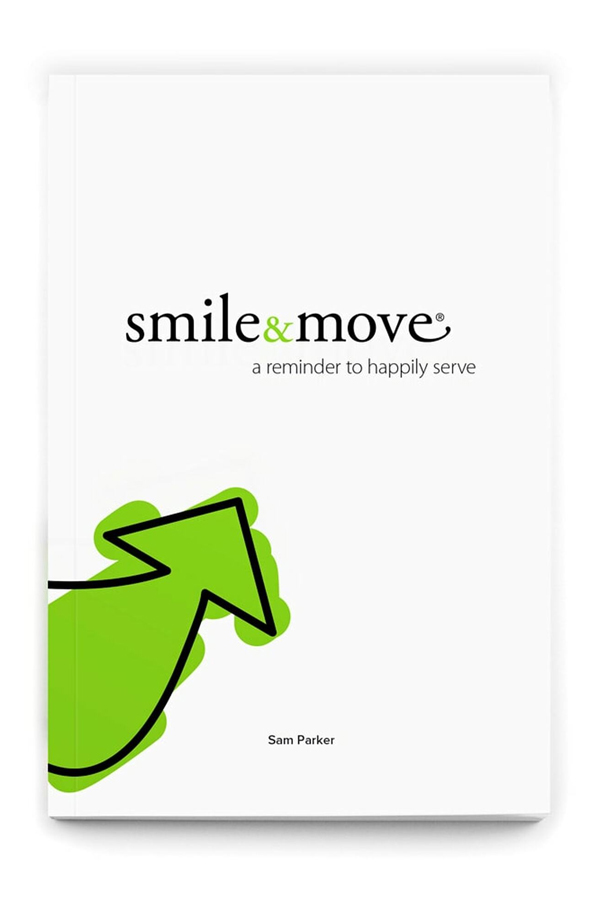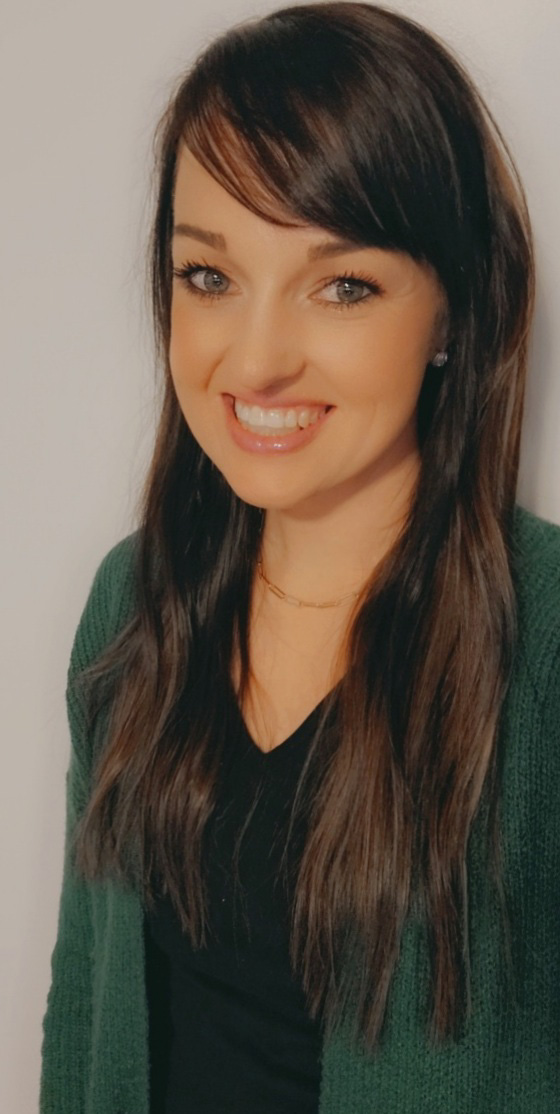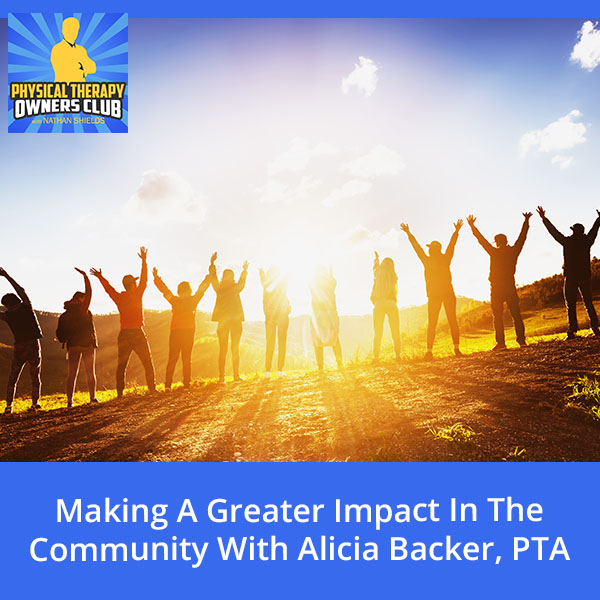
Making a greater impact in the community is a dream for many medical professionals. Alicia Backer, PTA has spent the past 7 years developing a culture and a clinic that is focused on doing just that. In this episode, Nathan Shields interviews Alicia as she shares what her clinic does to find team members who share their mentality and are ready to do some of the things they do to integrate themselves into the community. Alicia and her team have generated a fun culture that looks forward to working and playing together. Their patients sense that and gravitate to them as clients.
—
Listen to the podcast here:
Making A Greater Impact In The Community With Alicia Backer, PTA
I’ve got Alicia Backer, PTA, out of Thief River Falls, Minnesota. Alicia, thanks for joining me. I appreciate it.
Thank you, Nathan, for having me.
I don’t have a lot of PTAs on the program but you wrote a great article in the April IMPACT Magazine about becoming a community alliance champion and you had some good insight that I liked. It spurred some thinking on my own and thought it was worthwhile to bring you on and talk about the things that you brought up in the article and want to get into that. Before we do that, tell us a little bit about you. Where you’re coming from? What you’re doing nowadays?
I’m from Thief River Falls, Minnesota. It’s up in the Northwestern corner. We’re pretty close to Canada. It gets pretty cold up here. Most people don’t think there are humans that can survive this element but we do. I work at a private practice outpatient clinic. I live in a town that’s approximately 9,000 people. It’s pretty rural. We have a lot of outside communities that come in to see us, too. I graduated from the Physical Therapy Assistant Program in 2010. I’ve been in a physical therapy community for several years now and had some good experiences in a few different settings that gave me some of the knowledge that we’ll talk about. I have 5 kids, step kids, 2 of my own and 3 step-kids. It keeps me busy outside of all the other stuff that I do at work and for different parts of the physical therapy world.
Do you do something in your clinic that provides a lot of outreach to the community? Your article was about community alliances. What things are you doing then in terms of reaching out to the community in your setting? Your supervisor allows you to reach out. I’m assuming you have different aspects that you’re involved in the community. What do you do?
I’ll take it back a few years before I started working in private practice. I worked for a larger outpatient clinic in a hospital setting. While I was a part of that setting, I never was involved in marketing opportunities. I wasn’t involved in the process of planning it, what it meant, I didn’t care. It was much more based on productivity and seeing lots of patients. I didn’t have any knowledge at all working in private practice but once I started working here, we’re community-based. We have a high percentage of direct access patients. Instead of marketing to physicians, we spend more time marketing to the community. There’s a large employer in town that probably has about 6,000 to 8,000 employees that has a great insurance policy and they give us a high percentage of their direct access business.
We’re involved a lot with them. We partnered with them to create a work readiness program or injury prevention program for their business which was a huge step in the door for people getting to know us by coming in and being present and giving them that program. We do a number of things in the community. We put on the raises and we host chamber events. A lot of our employees are coaches in the community. There are a lot of things outside of the marketing box that we do that you don’t necessarily think are marketing. It’s not paying for marketing. It’s being present. It’s your time rather than money.
Is there an expectation in your clinic that you do some of those things that you lead out and either generate the race yourself outside of the ownership, taking responsibility for the team members in the community, certain things in the name of the clinic?
It only takes to have one person that's not coming to things or isn't fully engaged to bring down the morale. Click To TweetWhen we hire our people, the expectation is pretty much set in the interview. That is a big part of what we do and what makes our clinic successful and a part of our culture. We have a pretty unique culture. When we hire people, we make sure that they know the community events that we do. It’s not required but it is a volunteer. We look for people who are very highly engaged and high achievers that are looking to also do that type of stuff. We have a great team. There are eight people that work here. Everybody is excited when we do events. It makes it fun. It doesn’t make me worried when I delegate tasks because I know everyone’s going to follow through. I’m not great at delegating. I like to do everything myself. That also helped me learn more about the right way to go about marketing because involving your team, which are your huge stakeholders in this. It’s huge in your success.
It’s part of the interview process. It’s coming from the culture you’ve generated. I would assume if your supervisors or the owner was hiring somebody and they shied away from doing community events and weren’t that excited about it, they’re just not a fit. They’re not going to come in the first place. The fact that you bring it up in the interview process sounds like a huge part of it. You guys know who you are and you’re looking for a certain type of person.
When we hire people, I can’t say that we wouldn’t hire someone based on that solely but it does sway to us pretty heavily in one direction or the other because we have made that mistake in the past. It does end up not working out in the long run. You feel like when you have all the team members on board, everything feels good. Everybody’s enjoying it. Things are going well. It only takes to have one person that’s not coming to things or isn’t fully engaged to bring down the morale.
Those people probably self-select more than anything. They’re very, “I don’t fit in. This isn’t a fit for me.” It seems obvious, maybe like a natural party-wise, but the fact that you guys make it part of the initial process, you’re upfront about it. It sounds like there’s not necessarily an expectation that the team members are going to generate community-based events but the people need to be excited about doing so.
That’s an option, too. We can probably hear passion projects or people work on passion projects. That is what we say to them. “We want you to be involved but you’re never required to plan anything but if you want to, you’re more than welcome to do so.” We welcome all the ideas and creativity. Anyone who brings something to the table, it’s always talked about. You never shut it down because there’s always a way that you can figure out how to make it work.
The fact that you also have a culture that’s open to that because there are many scenarios where it is about productivity. “We’re talking about the members. Let’s move on. How can we improve?” It’s not as much about the culture so much.
We have a staff meeting every week that we hang out at lunch. It’s very informal. We talk about certain stats and stuff but everyone gets a chance to talk about whatever it is that they have to talk about that week. A lot of times, it’ll be about planning our next event. How we should make it better and what we should do or somebody will bring something new to the table that you’re like, “That’s crazy. I never thought of that but it’s fantastic.”
When you go out to these community events, what have you found are some must do? What mindset do you have going into these community events?

I always think about smiling and moving. It’s a book as well. Sam Parker has a book called Smile & Move. I don’t know if you’ve ever read it. It’s fantastic. I stumbled across it. It totally resonated with how I live. I thought, “This is amazing.” When you go to a community event, if you’re smiling, people are going to think that you’re approachable and likable. Moving means to serve people so be engaged. I don’t ever go to an event saying, “I work at Rehab Authority. I’m a physical therapist assistant. Have you ever been to PT?” It’s more like getting to know them then eventually it comes up, “What do you do?” You can talk about, “This is what you do. This is why you’re here. If you ever need us,” it’s more of a casual, “This is where we’re at. We’d love to help you,” but it’s never pushing yourself on.
You talk about this quite a bit in the article is having confidence in what you’re doing can help a lot of that. It makes it easy to smile and move if you have that confidence that lacks in our profession, knowing that we are the musculoskeletal experts. For some reason or other over the years, we’ve shied away from that. Some people might be afraid of saying that but if you go to these events knowing that you’re the musculoskeletal expert in town, your area, your niche, you name it, it makes it a lot easier to stand strongly in your space and be open to helping.
I know when the patient comes in our doors and has set up that visit or that free ten-minute consult. Once we get them in our doors, I know we’re going to help them. We’re going to do the best that we can. I have all the confidence in our staff to do that. It’s getting them there. We sell our culture and the type of people that we are by how we act and that we’re likable, you smile and we have fun. One of our core values is we have fun. That’s one of the top ones. If you get the patients in here, they forget why they’re here and the pain that they’re in. They are having a good time. A lot of times, they don’t even want to leave. It isn’t about selling what you do necessarily. It’s getting them in your doors.
Many people buy on what they feel. Buying is an emotional experience. Physical therapy is not exempt from that. I talked about this in an episode long time ago with Jerry Durham about improving the patient experience. Simply by focusing on them and the experience around physical therapy, not so much about the therapy itself can improve engagement, increase internal referrals, improve culture and an ability to have a greater impact in the community.
Culture is my favorite thing to talk about because I live in a great one. It’s easy in respect but first, you have to surround yourself with great people, which you talked about in hiring. You got to make sure. Just because they’re not the right fit for you doesn’t mean they’re not a good therapist. We all have a place that we are meant to be. Having expectations that we’re a high achieving, high energy makes a relationship. It’s all about building relationships with people then they’re going to keep coming back. They’re going to tell other people to come here. A lot of times, patients will come in because their friend has told them to come here. They’re like, “My friend said I need to come here because you are so much fun.” It’s never initially because, “You’re going to help my pain. You’re going to make me feel better. It’s because you guys are fun,” we love hearing that.
Tell me a little bit about that. It’s not necessarily related to your article but are there certain things that your owner has done to generate that culture? Whether it’s a routine. You talked about the weekly staff meetings and your agenda lens to that. You know your core values. Those are established and you probably talk about that quite a bit. What are some things that have generated this culture you’re talking about?
It first starts with good people. We have great people here. In the environment that we’re in, we have a pretty open clinic. We have two private treatment rooms. We solely use those for evals, anything that requires an enclosed room, exposed skin and then if anyone feels uncomfortable in that area. There’s a very small percentage of those people. We’re set up to have a great environment for not just us to communicate with each other but patients to talk to each other. We yell at everyone when they walk in the door and when they’re leaving. They relate us to Cheers, Everybody Knows Your Name. When they graduate from therapy, we announce it over a megaphone. We have a dance party. We have a graduation gown. We always do the extra. We have Fresh Cookie Fridays every Friday. We have dress-up days a lot where we’re dress ridiculous. They love that.
I bet National Physical Therapy Month is a month of a party for you.
COVID really challenges the marketing calendar because when everything's closed down for a year, you just fall off the wagon. Click To TweetWe have a chili cook-off and a pumpkin painting contest. It’s pretty intense.
You got the patients involved and all that good stuff.
It’s fun. We do a lot of competitions, too, like sprinting and flippers or something random. These people are crazy weird but they’re fun.
The cool thing about your open gym concept, it’s one thing to have it. The other thing is to get what we called crosstalk. It’s like shouting to the therapist on the other side of the room or having a conversation over there. Inevitably, whoever’s between me and that other person is going to get involved in the conversation, too. We’d even generate that by having a whiteboard that would have the trivia of the day. If you don’t have anything to talk about, there’s something on the whiteboard to talk about.
You can think of so many things to put on a whiteboard. Fun-Fact Friday, where we talk facts about each staff or competitions. It’s great.
Culture is so huge. You talk about culture, thinking that this is what’s going to get the best-aligned employees and retain them. It carries over. The patients feel that as well. It improves the patient experience and the desire to come. They might know that so-and-so down the street provides a certain amount of physical therapy that might be equal to, maybe even better than yours. If they simply like coming to your place more than 2 to 3 times a week, they’ll probably going to come to your place.
That’s the best part. Therapists are competitive. It’s our nature. We want to be the best.
Talk to us a little bit about the marketing approach as you talked about in the article. It sounds like you know who your niche is. Your marketing strategy revolves around where those people are most of the time. In the community or on social media, you’re spending time in those spaces.

Being so rural, we do see from 0 to 100. We see women’s health, vertigo, all the things. When we get a new therapist in our clinic or interviewing, we ask them that like, “What is it that you’re passionate about? Do you love pelvic health?” You have to cover all the niches per se if you want to maximize your success. When we go out, we have a new therapist who loves athletic rehab or sports injuries. What direction would you go to market that? If you love women’s health, where do you go to market that? How can we make that good? We take a case by case and we market to that population.
I love the wording that you use because as you bring in that person, you talk to them about where their passion is and what they want to focus on maybe but you don’t then stop the conversation. The next question is where are you going to go to find them? Many times, maybe you had this feeling as a new grad but newer grads come out thinking, “I’m going to join this clinic. Some other person’s going to provide me new patients,” and they don’t have to do any work for that.
You have to push especially if it’s a newer grad. You have to encourage them along and keep motivating them to like, “What’s the next step?” We had one here, start women’s health program. That’s an area that doesn’t have a lot of PTs are interested in that area. It’s a huge need and super rewarding. She’s working through that process. I said, “What are you going to do next?” She’s like, “I know I need to do it but I just like,” “Go. Get it done. Take action.”
I love how you set them up for that success, recognizing that they have some responsibility and accountability to develop their niche and that growth in that. This isn’t going to be handed to them. They have an active role in that. It was at the very end and there’s a lot like the last paragraph, you talked about the importance of a marketing calendar. Talk to me about that.
COVID challenges the marketing calendar because when everything’s closed down for a year, you fall off the wagon. We talk about that in our weekly staff meeting. In the year, we know in a timeframe we’re doing these things. Say around Christmas time, we always do this. We always have a Christmas dress-up week. In the summer, we always have friends and family appreciation day. We’re in the big parade in town in July. We have hosted a 5K in August. We were constantly talking about what’s next and what more do we want to do. They’re having a CrossFit challenge in town. How do we get involved in that? There are some kids that want to do a scholarship because of mental health awareness. How do we help them? You hear about something and it doesn’t always work where you can’t necessarily get involved but it’s worth giving it a try.
The cool thing is that you’re talking about on a routine basis as well and you’re looking ahead on the calendar. Say something like Halloween comes up, you start talking about it on October 27 and like, “What are we going to do in four days for Halloween?”
You don’t love it.
It sucks because we’re under the gun and there’s pressure. I’m assuming that these events don’t take you by surprise. You’re able to be fairly well prepared for them and that makes it more fun.
It really isn't about selling what you do necessarily. It's just getting people in your doors. Click To TweetIt does. When everybody is on board, it’s pretty easy.
It makes it so much easier especially if you’ve done it before. If you have some traditional things that you’re doing, you know what we got to do and what everyone’s strengths and weaknesses are, you play to people’s roles and everyone knows what they need to do. It’s also, at that time, a lot easier to add on and make it an even better 5-star, 6-star, 7-star experience.
That’s a lot of the challenge when somebody is maybe opening their own practice or looking into starting a marketing plan is they want to do so much like, “We got to do this.” You’re better choosing the populations in the areas that you’ll receive the most return from and also knowing your payer mix, where you should focus most of your energy there and then build on it. That’s what got me a little bit more knowledgeable on this subject. When I started working here, it was just one PT and I. He opened it. We quickly needed help in the front office area. It was three of us for a long time. I’m also the clinic administrator so I take some of the buffering between the rehab director and the rest of the staff.
I was doing everything. I’m an achiever and maximizer. I feel good at the end of the day if I get all these things done. If I don’t, I feel lousy about it. I wanted to do everything and be a part of everything. I used to be bad at delegating tasks because I don’t always trust the people who are going to do them as good as I can. I got to the point where I started not enjoying them as much because I was feeling tired and burnt out. I realized that I needed to rely on people and trust that they were going to do as good of a job, if not better. It did turn out that way. I did start encouraging other people to take on more roles with these different events. I have my one area that I love. I love running so I love doing the 5K. Somebody else loves planning Halloween. Delegating those tasks so that you continue to enjoy them rather than feeling like it’s a bunch of work was huge for me.
You sound like a lot of burned out PT owners that I know. It’s the same thing with most owners and maybe your owner feels the same way or he or she doesn’t feel that way because you do all that for him or her but it’s that same thing. “I got many things on my plate. I know I can do them better if I do them myself,” but then you can only do so much. For me, it had to come down to, “Could they do 80%? Would I be happy with 80% of what I could do? If that’s okay then let’s hand it off. Let’s systematize it if possible or find someone who gets excited about that.”
For me, I’m not excited about marketing, like going to the doctor’s office to talk to the doctor who doesn’t want to see me and get past the front desk person whose job is to deflect and redirect me. I don’t want to do any of that. I had a PTA, she was awesome as a PTA but when I talked to her about marketing, she’s like, “I would love to do that.” Inevitably, there are people on your team who have strengths and get energy from things that don’t give you energy and are not your strengths. You have to rely on those people. That’s how you get a diverse marketing strategy in place and expand your presence in the community.
You’re talking about the calendar. That’s where we started with this conversation. It’s revisiting it and staying consistent. You don’t have to have 50 things on the calendar for the year. Pick something once a month, big or small and try and be consistent with that then you can always add to it.
You talked about payer mix in the article in here. We’re in a business. You don’t want to go towards the low payers all the time. If you know where the insurances are that pays better and you can find your niche within those and find out where those patients live, work and breathe then that can make things a lot easier on the business.
We have a couple of businesses in town. The one I talked about who has no medical responsibility. It’s 100% free healthcare and that’s all direct access. That’s huge for us but then you also have another large employer that has a high out-of-pocket responsibility. We market to them. We want to see them but we don’t spend a ton of our energy over there. That’s why we started the program with this business because we wanted to keep them coming through our doors.

That’s smart in that way because every owner has to deal with that if they’re taking some insurance but even if they’re not taking some interest, they want to find their ideal client. That ideal client could be a certain athlete, a geriatric population, a certain patient within an insurance payer but knowing who that is and targeting your message towards them will generate more of those. It also has some carry-over to generate more patients from the other ones that aren’t your niche. We covered a ton of stuff. Is there anything else that you remember or recall from the article or from your personal experience that you think is valuable in reaching out to the communities and establishing good relationships?
You spend at what is it like the 80/20 Rule, 80% of your time preparing for your marketing plan and 20% is doing the work. You need to spend time thinking about these different things. Making sure you got good people and you utilizing your assets, using your people then get out there and find things to do that you enjoy. There’s nothing on our marketing calendar that I don’t look forward to. It doesn’t seem like work. It takes some energy. You usually are exhausted after the event’s over but I would do that 100 times before going and talking to a physician. It’s nothing against doctors but I literally would rather watch paint dry.
It sounds like based on your experience now and to flip that 80/20 Principle, you know what your 20% of work is that gets you 80% of the results. You’ve found a groove there. You have probably been to some community events where you’re like, “I won’t do that again.”
This is one thing I want to leave you with, 2020 has been challenging for everybody. We’re all coming out of it now. We’re feeling good here at our clinic, finally but everyone has gotten a little bit lazy. Getting out and about and putting in the extra effort and doing more than people expect like the whole Zoom meetings, get face-to-face if you can. Go and see people and start doing these things again and don’t just say, “We didn’t do it in 2020. I don’t know if we want to do the race this year.” Do it because you end up doing it. You realize, “This is why we did it in the first place.” It’s so rewarding.
Thanks so much for your time. Thank you for the article. If people want to read it, it’s in the April IMPACT Magazine. There’s a lot of good information in there. If people want to connect with you and maybe talk to you a little bit more about it, Alicia, how would they do that?
I will give you my email. It’s ABacker@RehabAuthority.com.
Thank you so much for your time. I appreciate it.
Thank you, Nathan.
Important Links:
- Alicia Backer
- Smile & Move
- Jerry Durham – past episode
- ABacker@RehabAuthority.com
About Alicia Backer
 Alicia Backer is a Physical Therapist Assistant and Clinic Administrator at Rehab Authority in Thief River Falls, MN. She started her journey in 2010 when she graduated from Northland Community & Technical College in East Grand Forks, MN.
Alicia Backer is a Physical Therapist Assistant and Clinic Administrator at Rehab Authority in Thief River Falls, MN. She started her journey in 2010 when she graduated from Northland Community & Technical College in East Grand Forks, MN.
She has experience working in various settings since graduation but has spent the past 7 wonderful years working in the private practice community. Alicia was recognized as Rehab Authority’s Administrator of the Year in 2015 and 2016 as well as being chosen as MN APTA Outstanding PTA in 2020. She has presented at numerous national conferences including PPS and CSM as well as many local venues.
Alicia has been a co-developer of Injury Prevention and Performance Enhancement Programs and has created and implemented work readiness programs. She is an editorial board member for Impact Magazine where she has authored articles on clinic culture and building community alliances and has served on a PTA Advisory Board for Northland Community and Technical College from 2017-2021.
Outside of the physical therapy community Alicia coaches women’s basketball at a local junior college and works with young athletes as a speed and agility coach. Family also keeps her busy as she chases her 2 kids, Camdyn and Josie, to all of their activities while also finding time to run, read, and enjoy friends.
Love the show? Subscribe, rate, review, and share!
Join the Physical Therapy Owners Club today:
